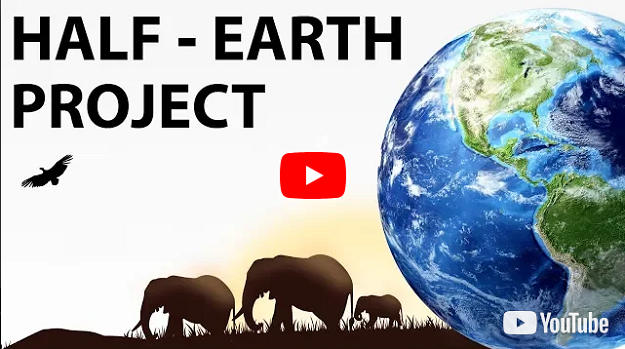

• In the past half-century, species that were once virtually innumerable have practically
disappeared from the Earth.
• The rate of extinction is at least 1,000 times higher than at any time in human
history. To lose so much of Earth’s biodiversity is both to destroy our living
heritage, and to risk the stability of the planet itself.
• As this century’s most eminent biologist E.O. Wilson advocates in his book,Half-Earth, if we conserve half the land and sea, the bulk of biodiversity will be protected from extinction.
• The Half-Earth Project’s programs convene expert partners and leaders in an inspiring campaign to raise conservation efforts to a new level and enhance our resilience.
The Half-Earth Project will
1) drive the research needed to better understand and care for our world,
2) provide leadership to guide conservation efforts, and
3) engage people to participate broadly in the transcendent goal to conserve Half-Earth.


• Field Research
The Global Biodiversity Census Initiative (GBCI) is developing a comprehensive database of the earth’s vast biodiversity and using this data as a fundamental tool for conservation.
• The goal of the GBCI is to generate the global biodiversity knowledge needed to inform and promote conservation towards Half-Earth.

• The Mapping Core Team of the Half-Earth Project will address this question through deep scientific analysis and visually engaging mapping.
• The Half-Earth Mapping Core will provide expertise, leadership and visually engaging maps to guide conservation efforts towards the goal of Half-Earth.
• Data Integration
Analyze the status of protected areas and governance worldwide, integrating data regarding the historical distribution of biodiversity, human population, biodiversity richness, extinction risk, corridor opportunities, and landscape and cultural values to support the creation of dynamic & interactive maps.

• In order to reach a broad audience, the Half-Earth Project will create exhibits and film, and
communicate and engage through social media and concerts that create a transformative
experience around the need to care for the rest of our planet, seeding establishment of a movement culture that supports the goal of Half-Earth
• The inaugural Half-Earth Day was held on October 23 in Washington, D.C
• India’s forest policy calls for forests to cover almost a third of the country (33%), and if we include other natural systems such as grasslands and wetlands, the area to be protected could amount to almost 40%.
We need a massive new effort to catalogue, map, and monitor life, using fundamentally different approaches.
• Current efforts to map India’s biodiversity are largely restricted to forestlands, while plans for species monitoring are even more inadequate.
• Today, we have the digital tools and artificial intelligence today to efficiently catalogue, map, and monitor life’s fabric in a manner never before attempted — and with the potential engagement of millions of students and citizens.
• This mapping effort would include not only all life, including cultures, ethnicities, and dialects, but also the use of biodiversity and its vulnerability to changes in land use and climate
• It is important to understand how society interacts with biodiversity, and how economic, social and political forces can erode the biodiversity that ultimately
sustains us.
• It is important to learn how myriad species interact to drive our ecosystems, and how these systems in turn maintain our soils, water and breathable air.
• For instance, it is vital to learn how the wild pollinators, the microbiota of soils, and the many enemies of agricultural pests — and many other natural services — underpin our
agricultural productivity and mitigate climate change.






















 WhatsApp
WhatsApp